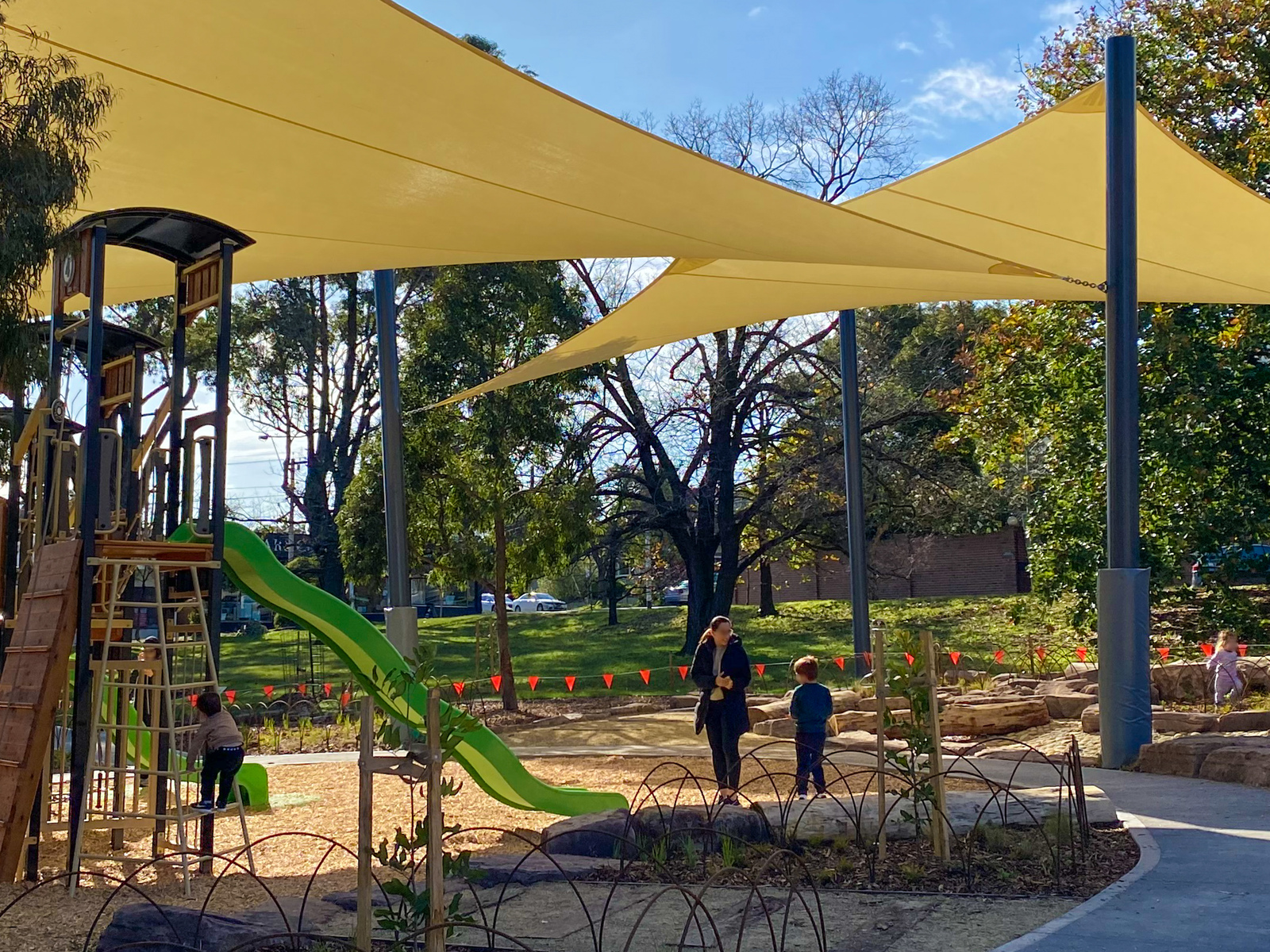On this page
We use our Playground Development Strategy, which is summarised on this page, to guide our plans, maintenance, and upgrades of playgrounds across Boroondara.
Playground categories
We place each playground in Boroondara into one of 3 categories: local, district or regional.

Local
- Small-sized
- Designed to serve low numbers of local residents for short stays.
Example: Grovedale Park, Surrey Hills (pictured)
District
- Medium-sized
- People are prepared to travel a little further from home to visit a district playground
- Often connected to larger open spaces like sports fields, local sports club facilities and green space.
Example: Deepdene Park playground (pictured)


Regional
- Large-sized
- People are prepared to travel further from home to visit a regional playground and often stay for longer periods of time
- Often connected to larger open spaces like sports fields, local sports club facilities and green space
- Typically larger than district playgrounds, include a bigger range of activities, and often include a special or major facility.
Example: Victoria Park, Kew (pictured)
Scope of upgrades
When it's time to upgrade a playground, its category will determine the budget, design focus and scope of the upgrade.
All playground categories will have:
- seating
- picnic tables
- drinking fountain (if there is one currently there)
- nature play or natural elements like logs, log steppers and stone elements when possible.
Refer to the table below for other general features in scope for playground upgrades.
| Local | District | Regional | |
|---|---|---|---|
| Water and sand play | No | Considered on site-by-site basis | Considered on site-by-site basis |
| Public toilets | No | No | Yes, accessible toilets |
| Picnic and barbecue facilities | No | Yes, depending on site | Yes |
| Fence | Considered on site-by-site basis | Considered on site-by-site basis | Considered on site-by-site basis |
| Car park | No | Yes, depending on site | Yes |
| Rubbish bins | Yes, depending on site | Yes | Yes |
| Shade sails | No (see below) | Yes, depending on site | Yes |
Shade
Our Shade Policy guides how we provide shade in our playgrounds.
At all of our playgrounds, we aim to:
- add roofs to play structures to provide shade
- keep mature and healthy trees and plant new ones near play spaces to create natural shade.
If there isn’t enough natural shade at district playgrounds, sometimes we provide roofed picnic shelters and we may install temporary shade sails until new trees mature. At regional playgrounds, we provide roofed picnic shelters and may install permanent shade sails.
Other ways we improve the play experience
In addition to upgrading the playground, we take other factors into account to improve the play experience for children and families.
Furniture, path and tree renewal
If we upgrade a playground within a park, we may take the opportunity to renew trees or upgrade park furniture and paths at the same time. Find out more on our Renewing park assets page.
Based on the category, we take every opportunity to make play areas accessible for people of all abilities. All parks have a path system, but not all sites have the same potential to be made accessible.
Our regional playgrounds provide the most all-abilities play equipment and supporting features like accessible toilets, drinking fountains and picnic facilities.
Why and how we upgrade playgrounds
As part of our Capital Works program, we allocate budget to upgrade certain playgrounds each year.
We follow a 7-step process to decide when and how to upgrade playgrounds:
- We check our playgrounds every year to see how old and in what shape the equipment is and if it is up to Australian Standards. Usually the age and condition of equipment signal it's time to upgrade.
- Council officers visit the playgrounds which need to be upgraded to learn more about their condition and the area around them. For example, they look at how well the ground drains, the amount of tree cover, the slope of the ground and the location of nearby houses.
- At each playground we're upgrading, we install a sensor to identify patterns of use. It's not a recording device and it doesn't have a camera. We install signs to show a sensor's location and purpose.
- We consult with our community to help us design the new playground. Visit Your Say Boroondara to learn about and contribute to any playground consultations that may be open.
- We develop a draft design based on community feedback, site suitability, authority requirements and available budget.
- We finalise the design.
- We engage a contractor to build the playground.
Construction starts when these 7 steps are finished.